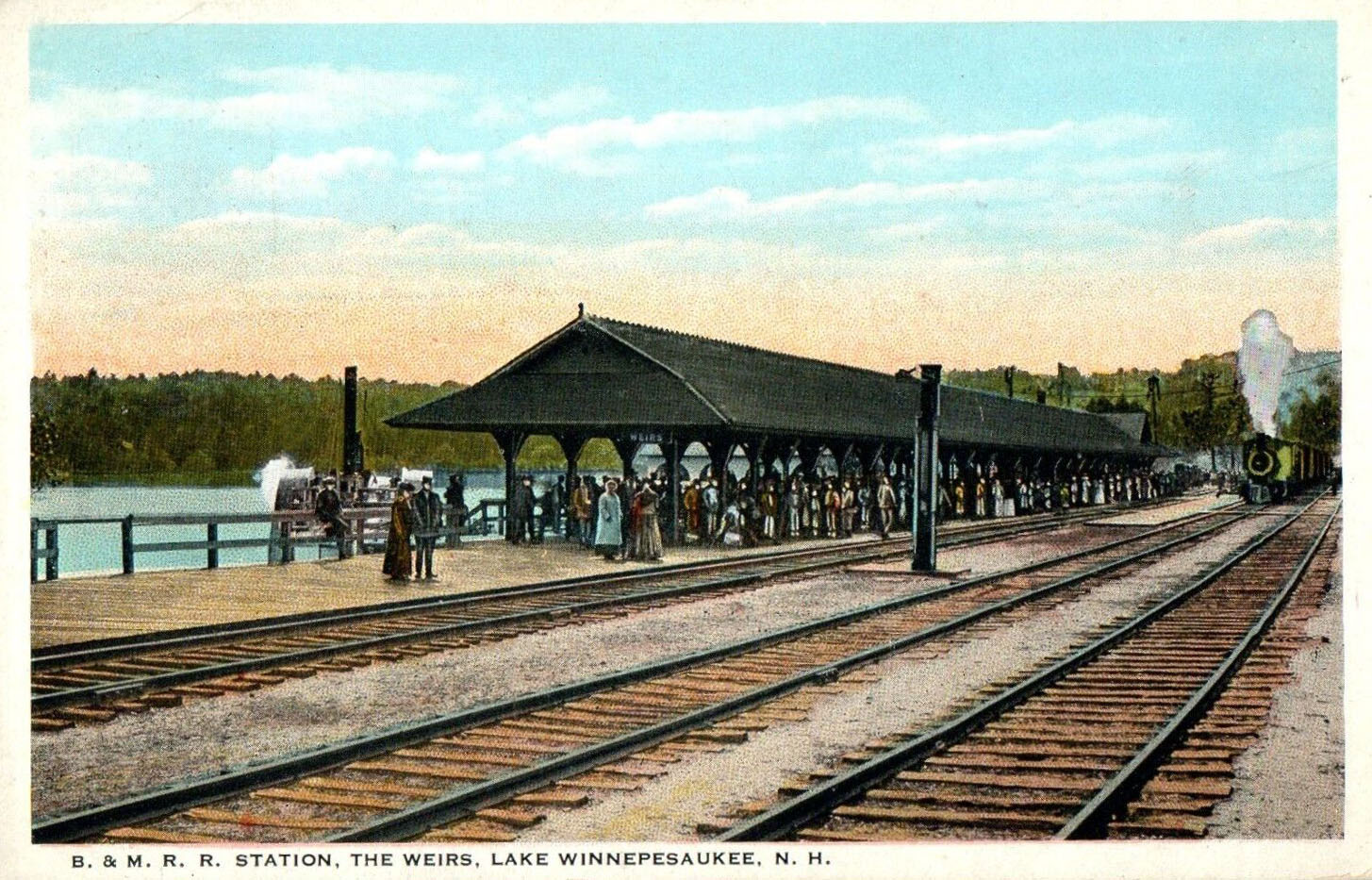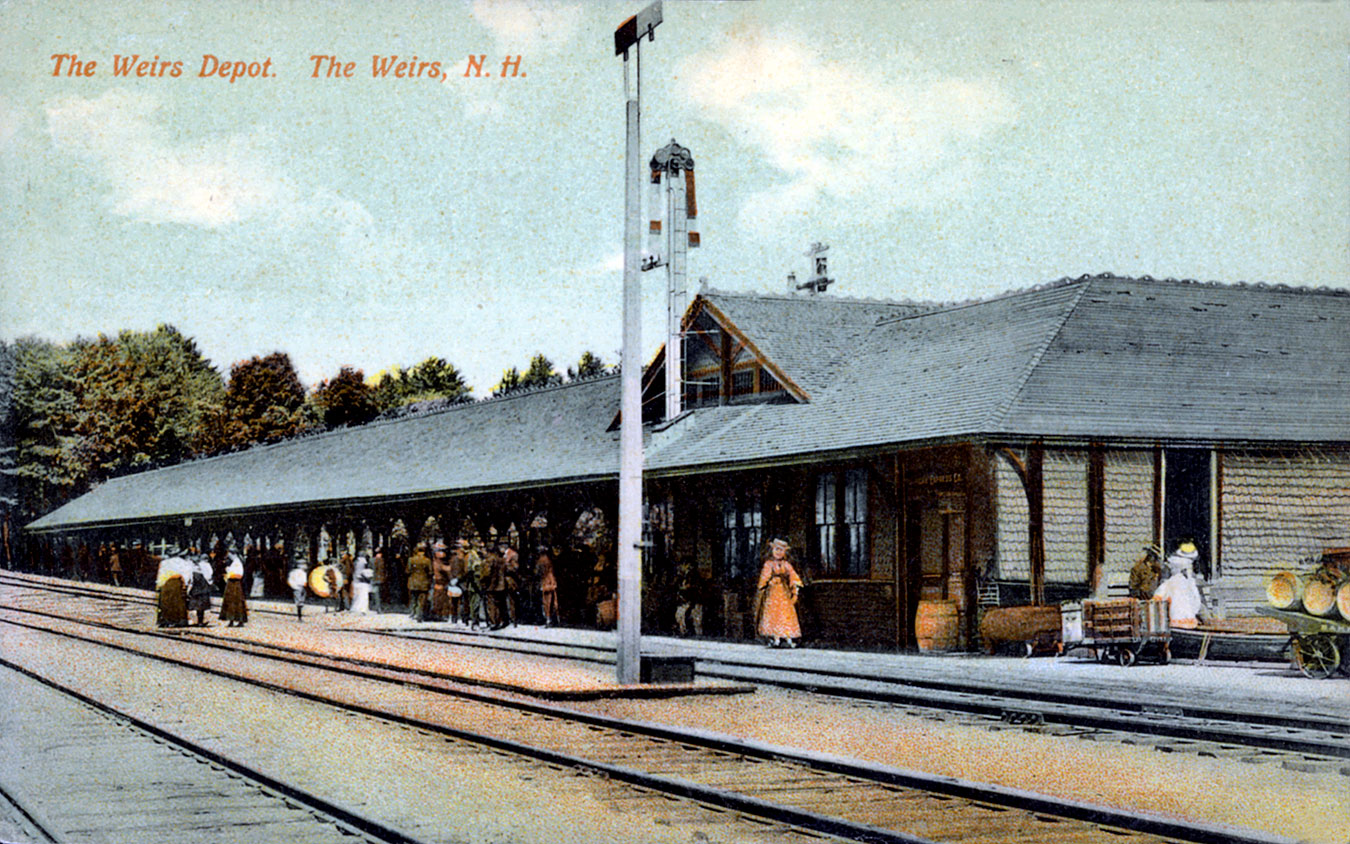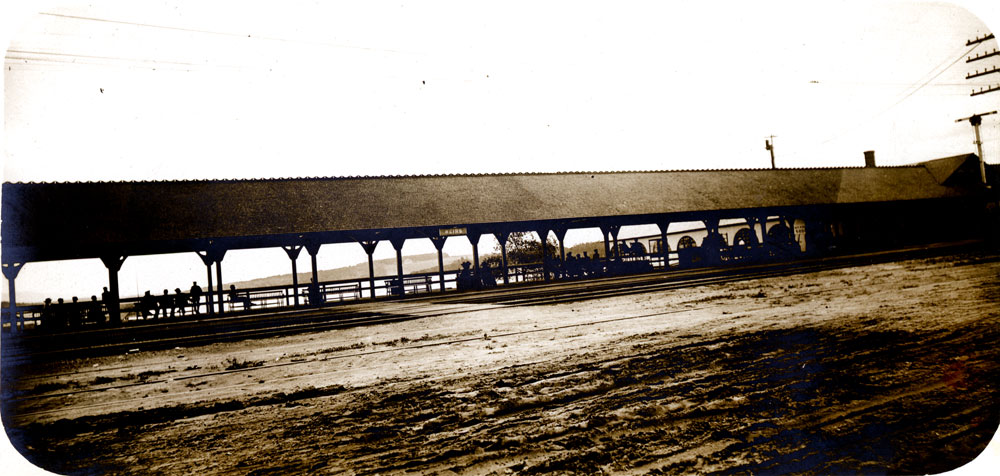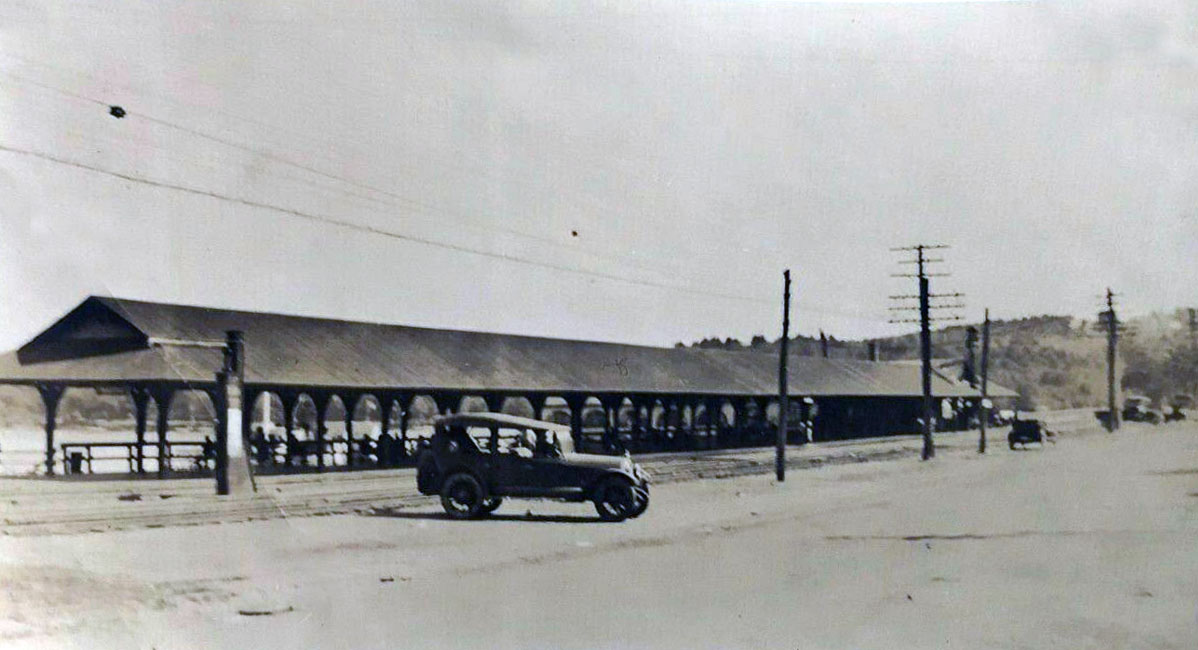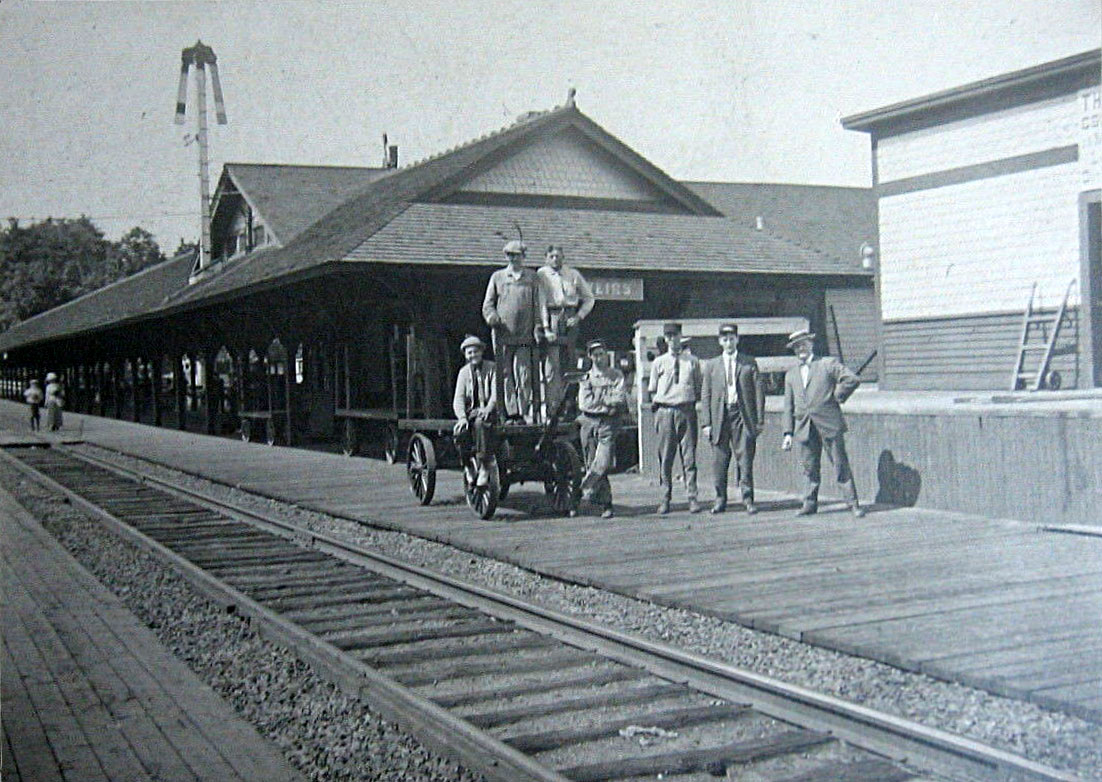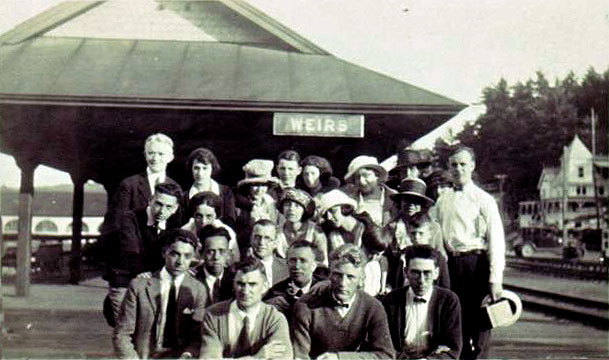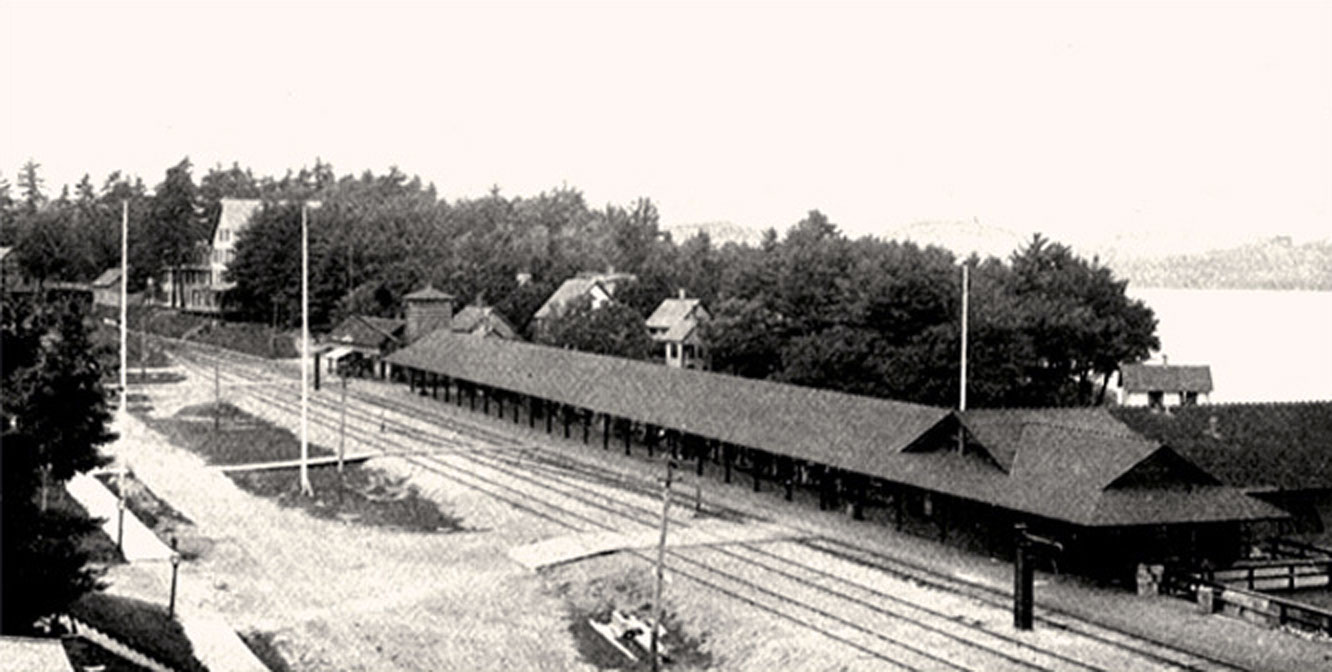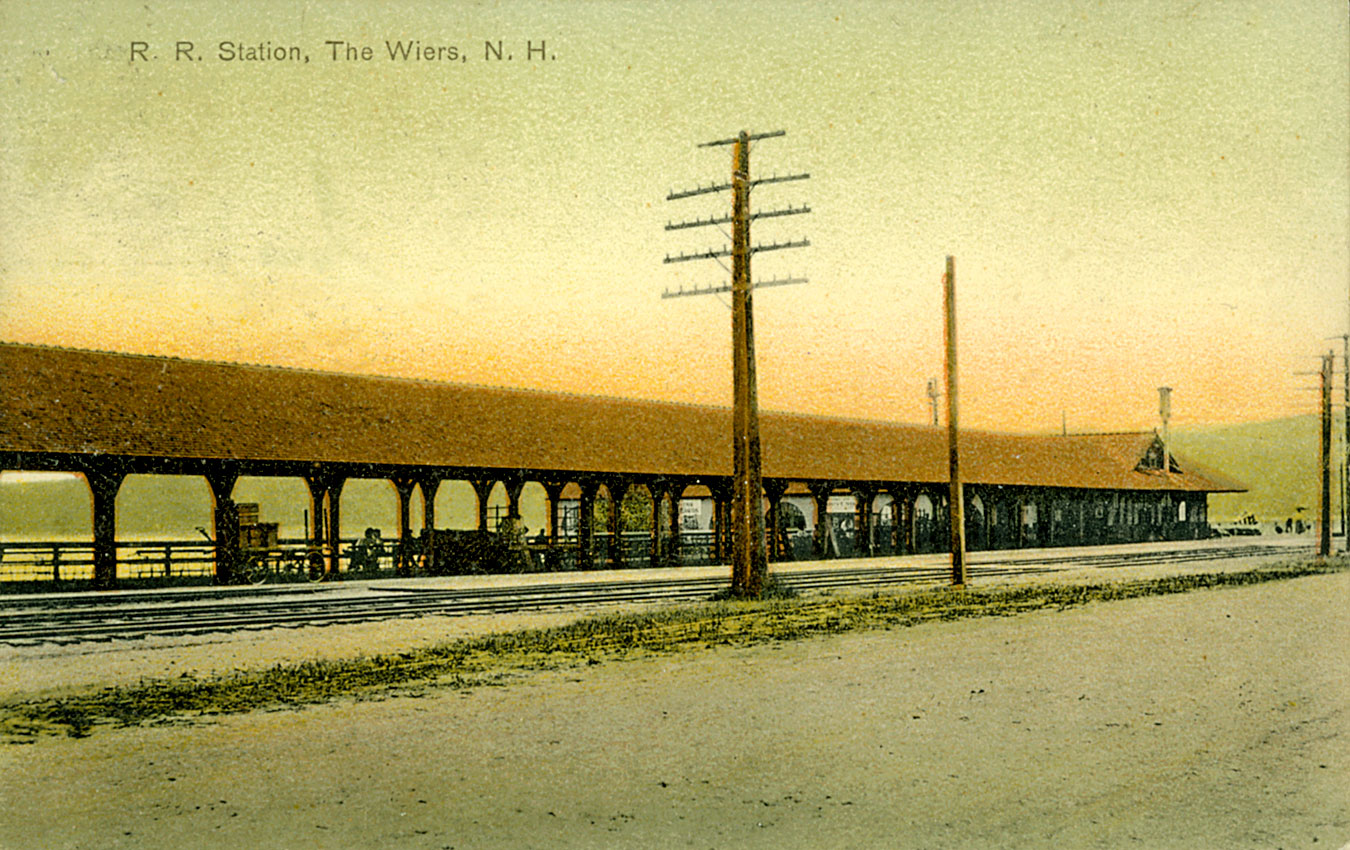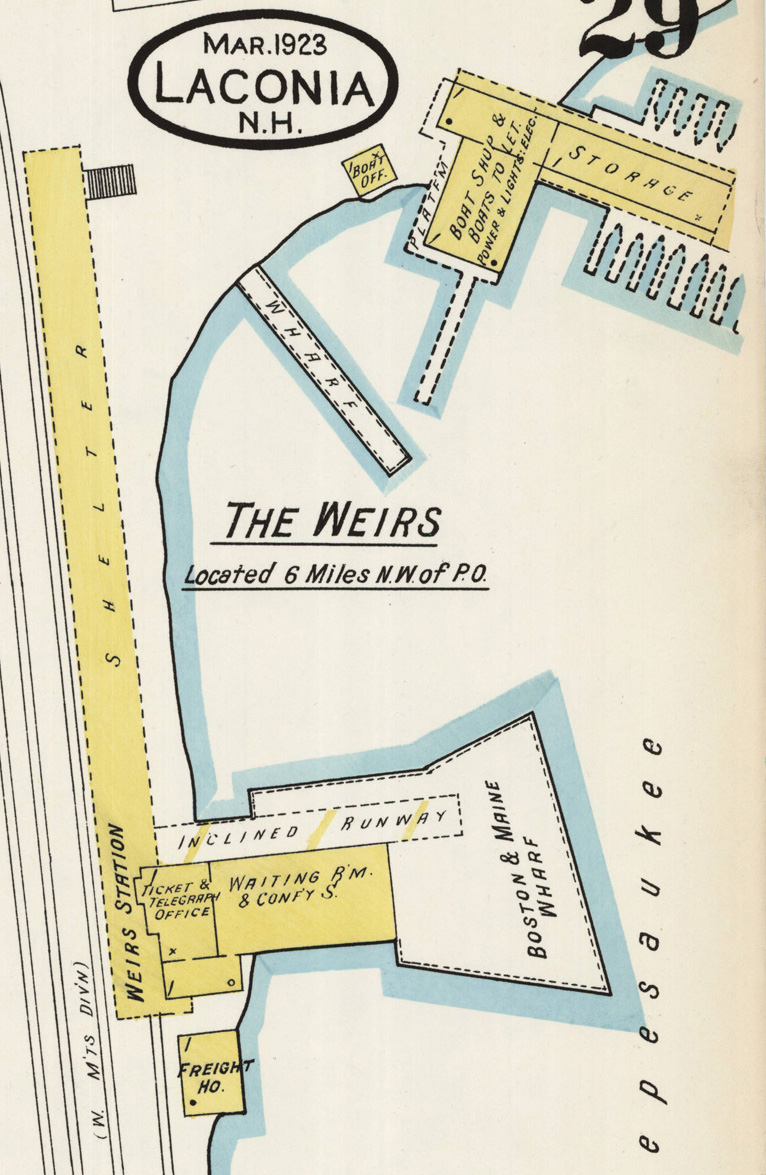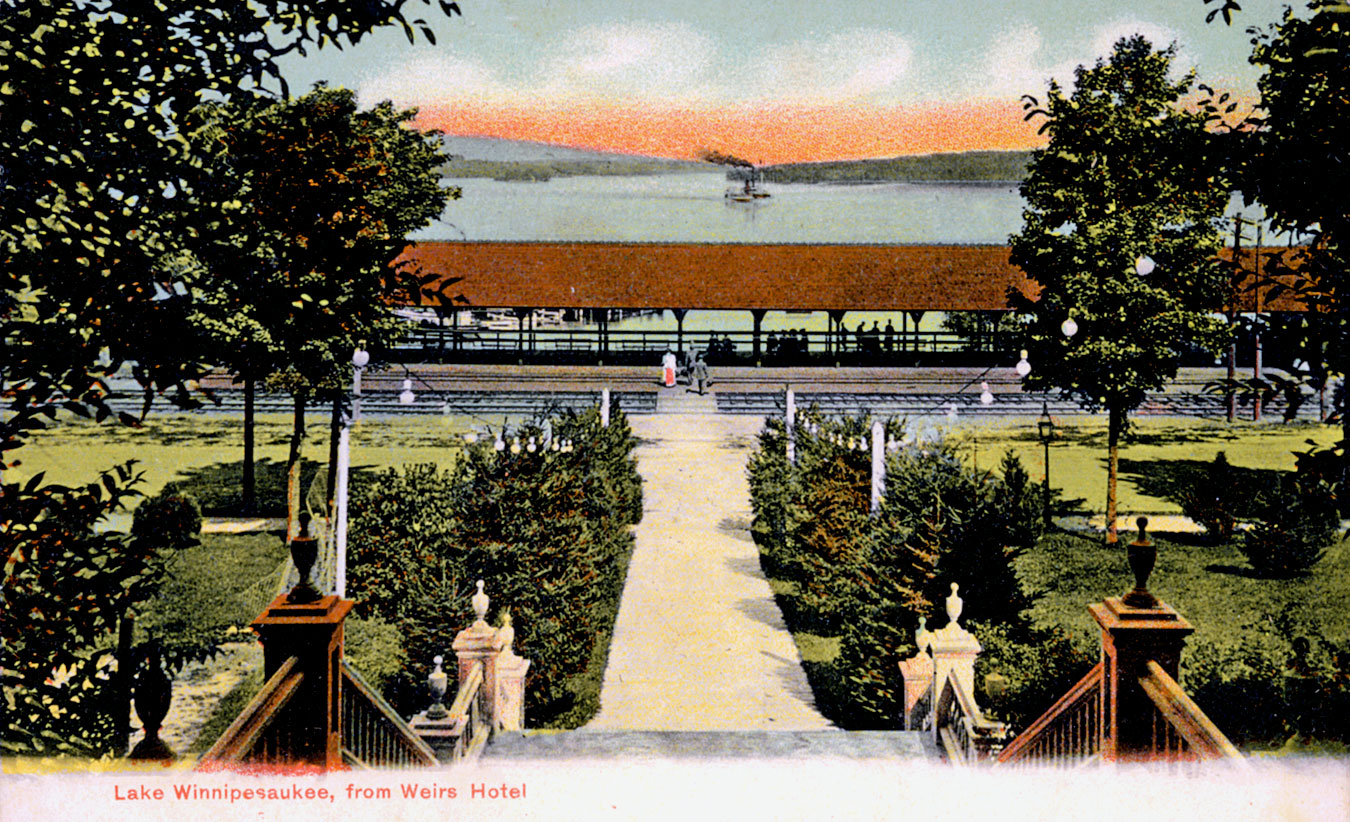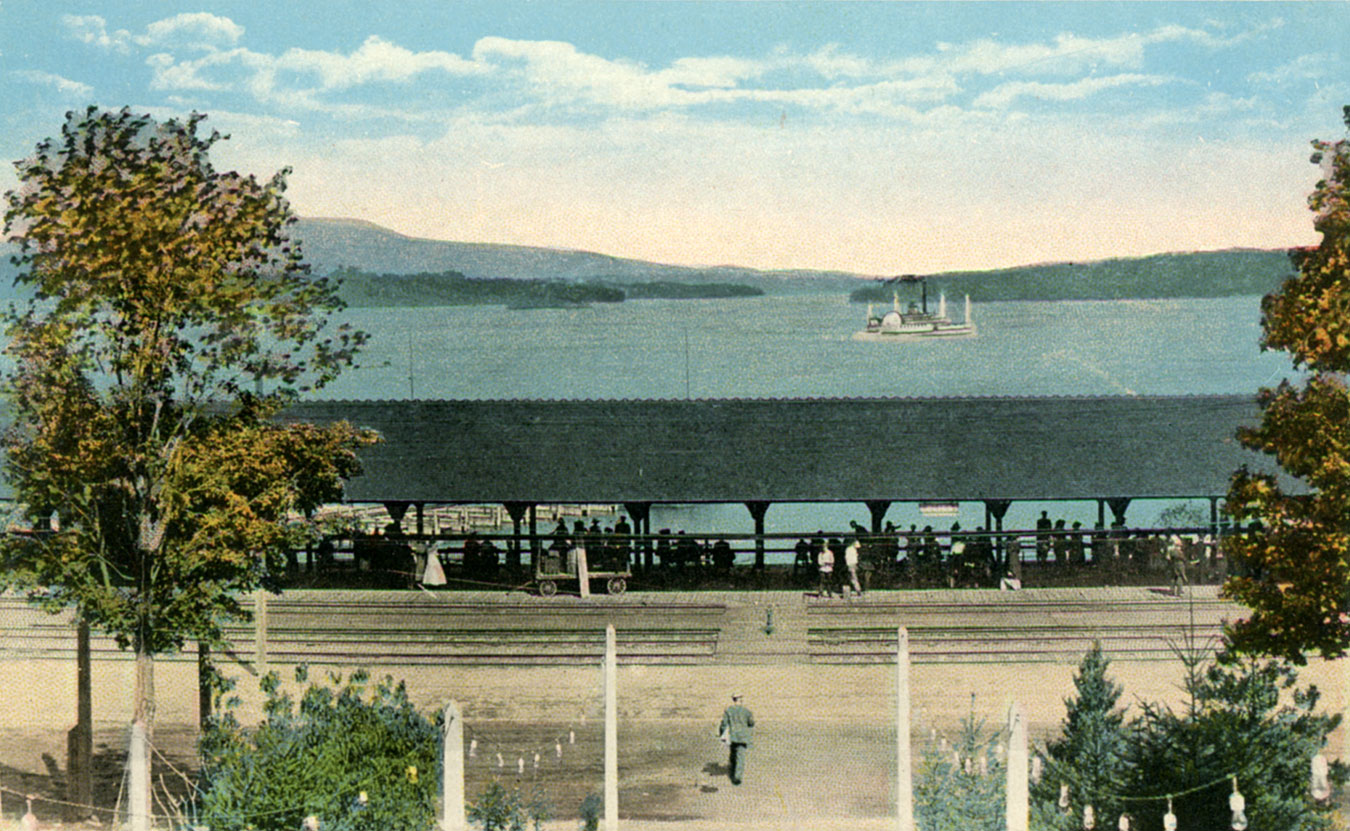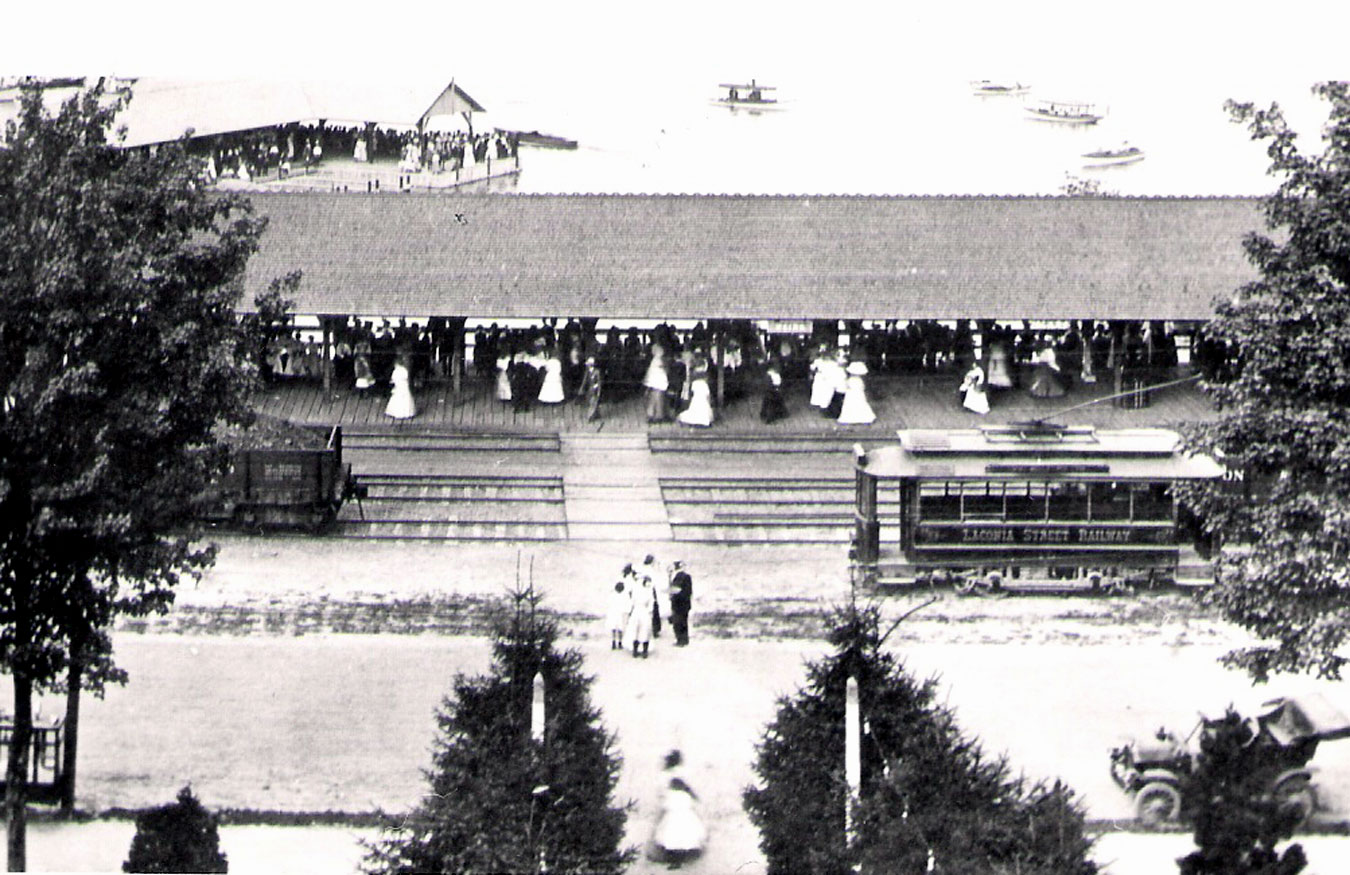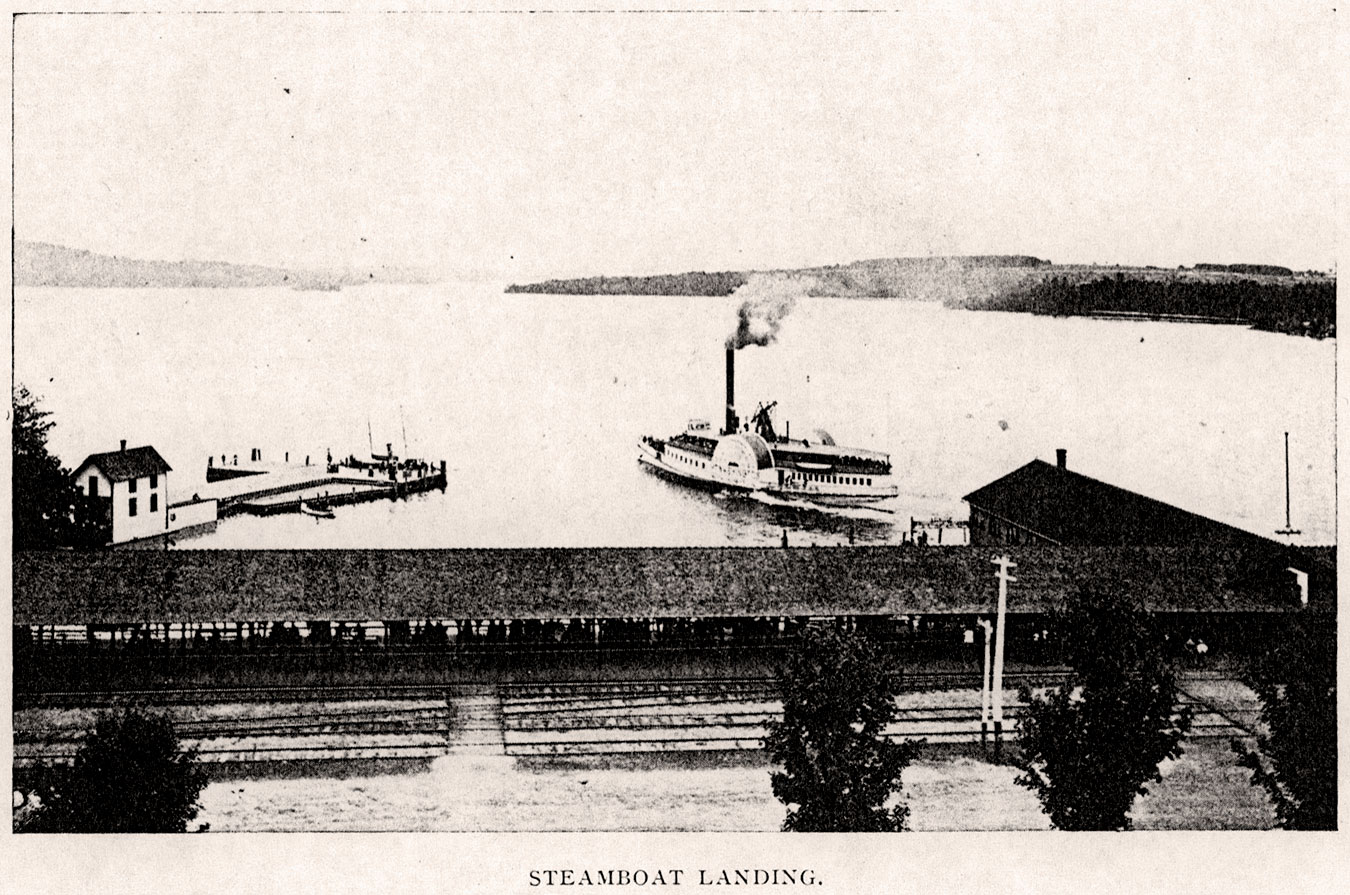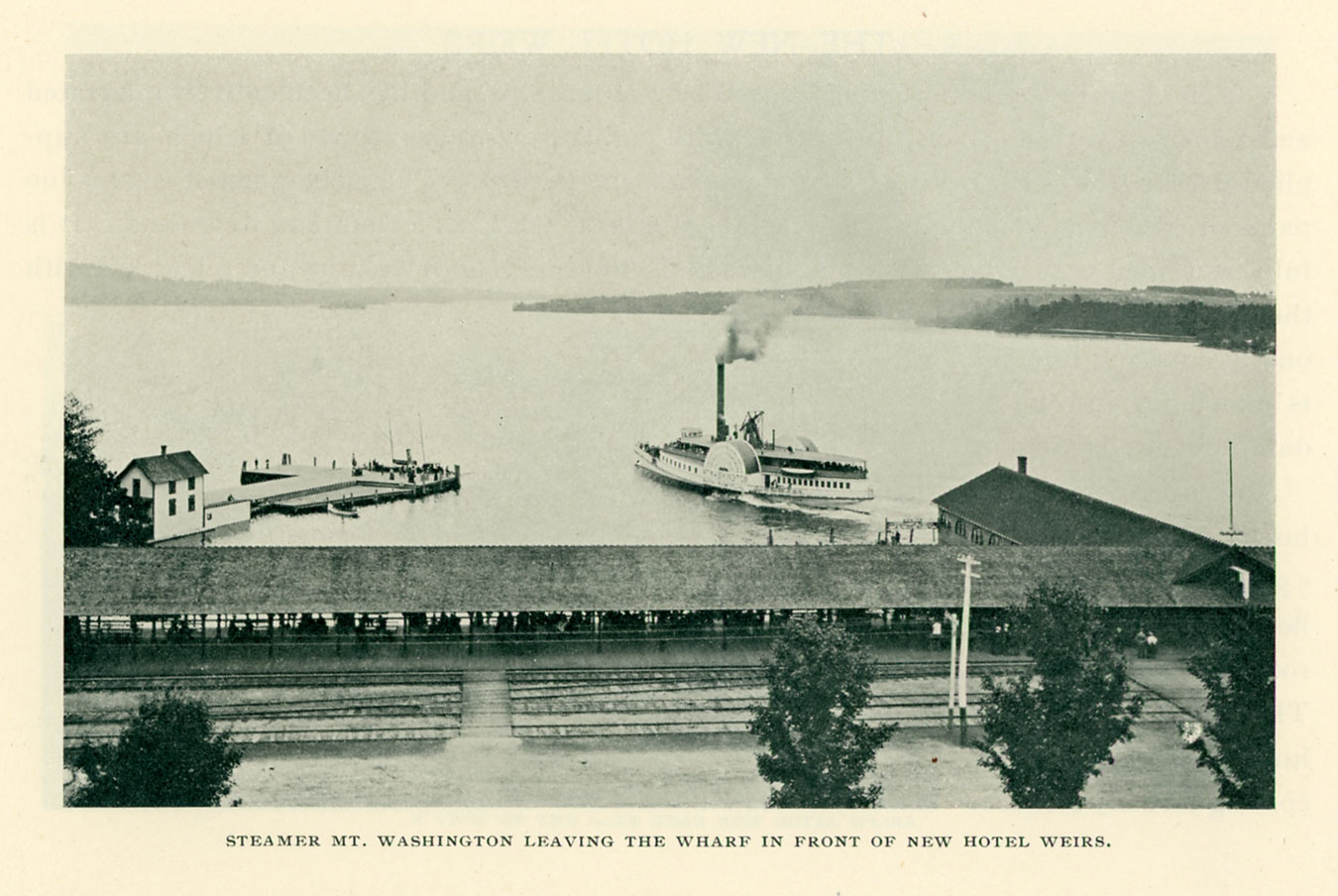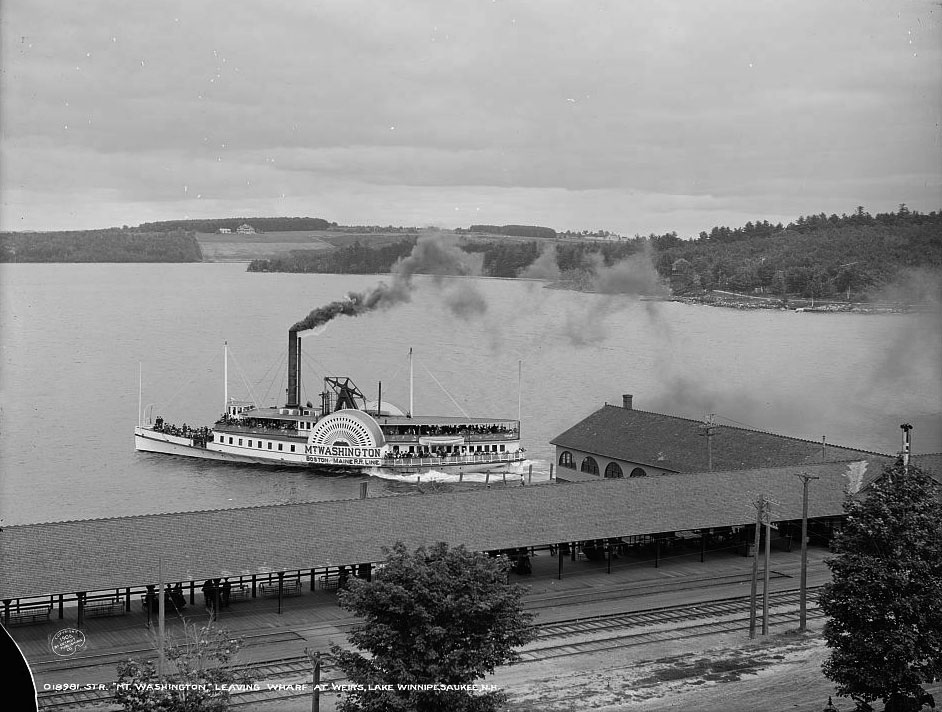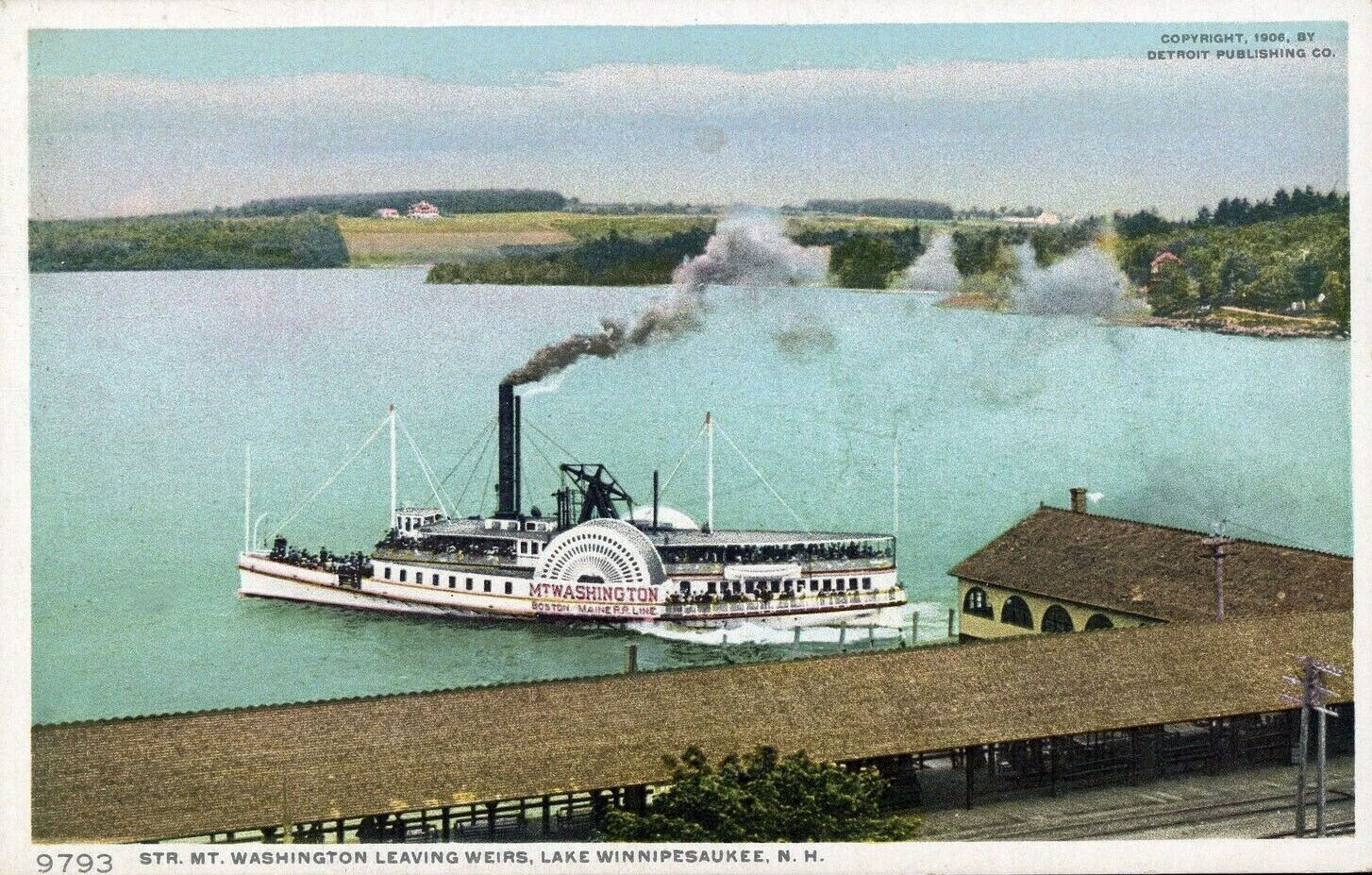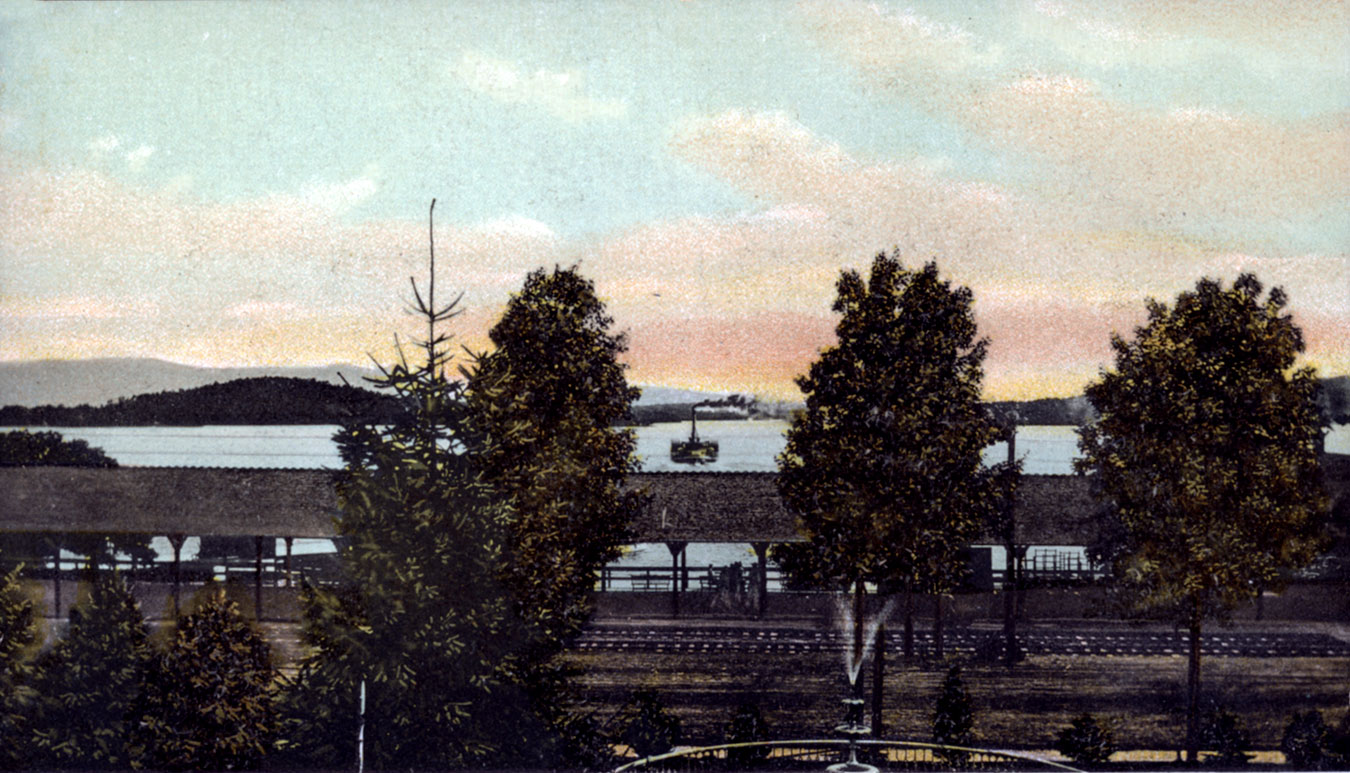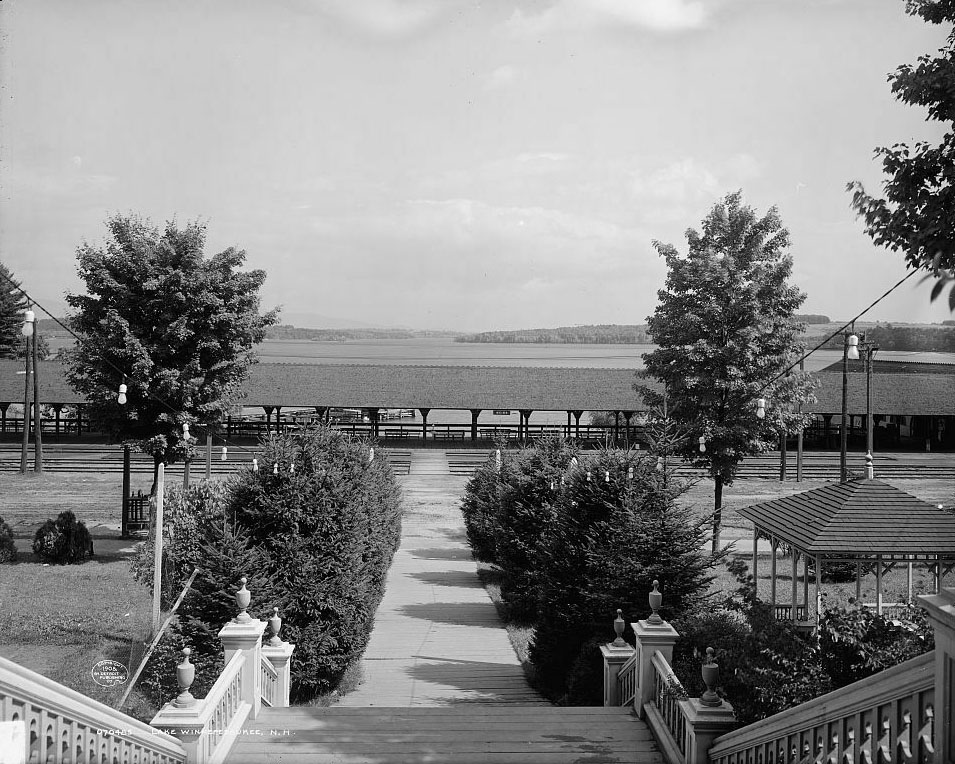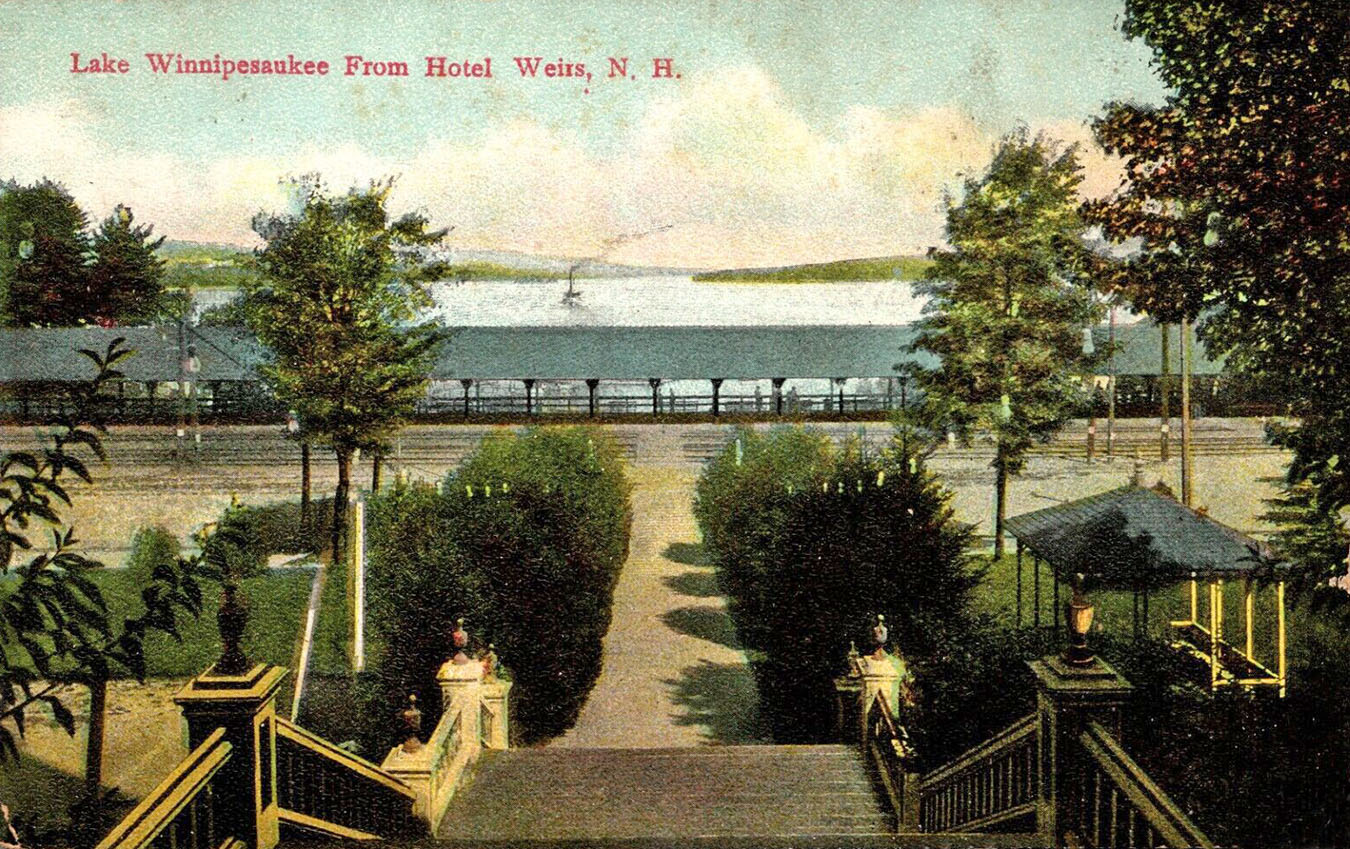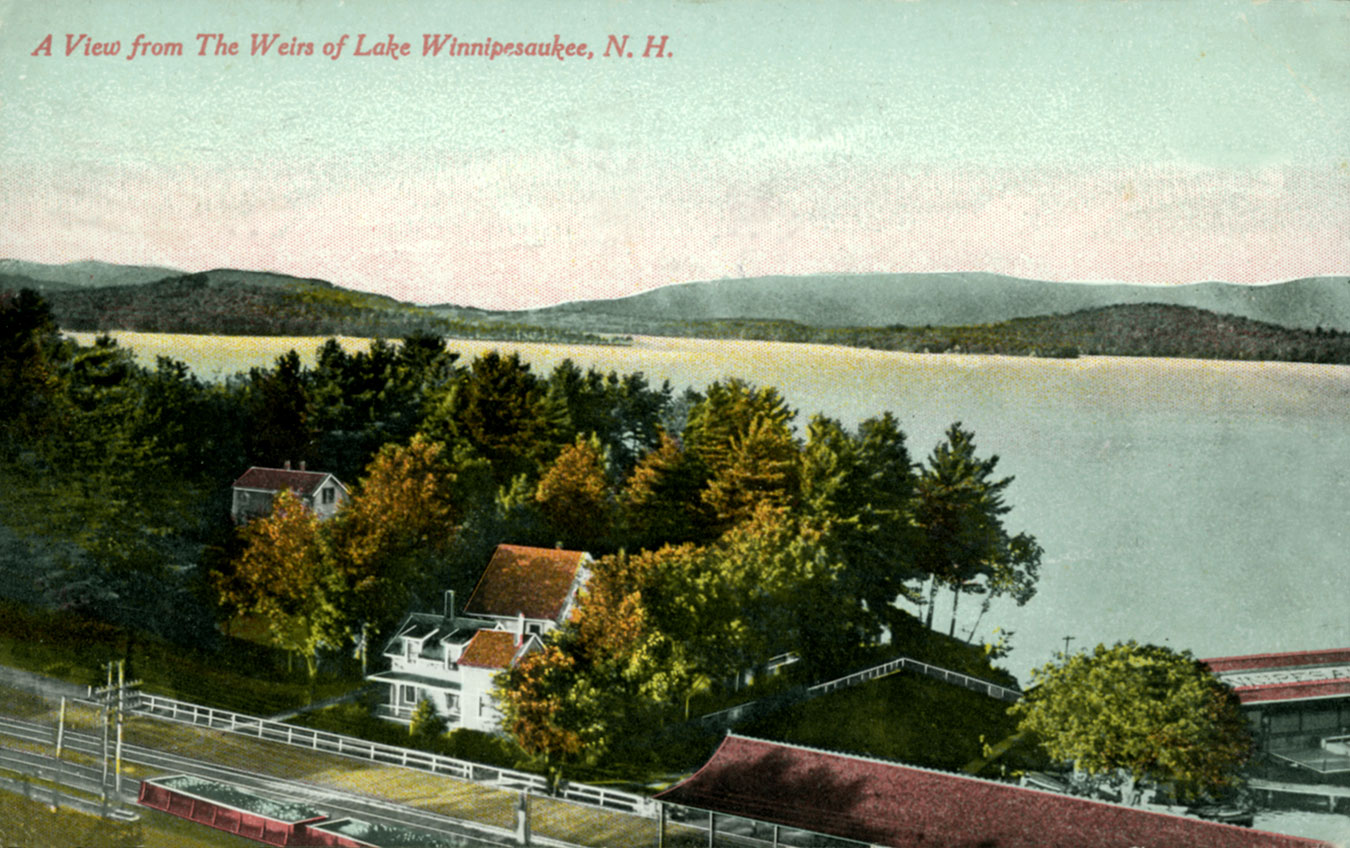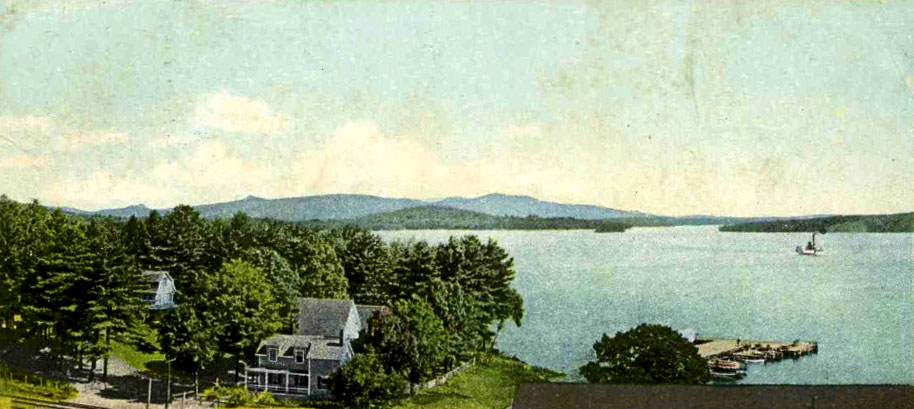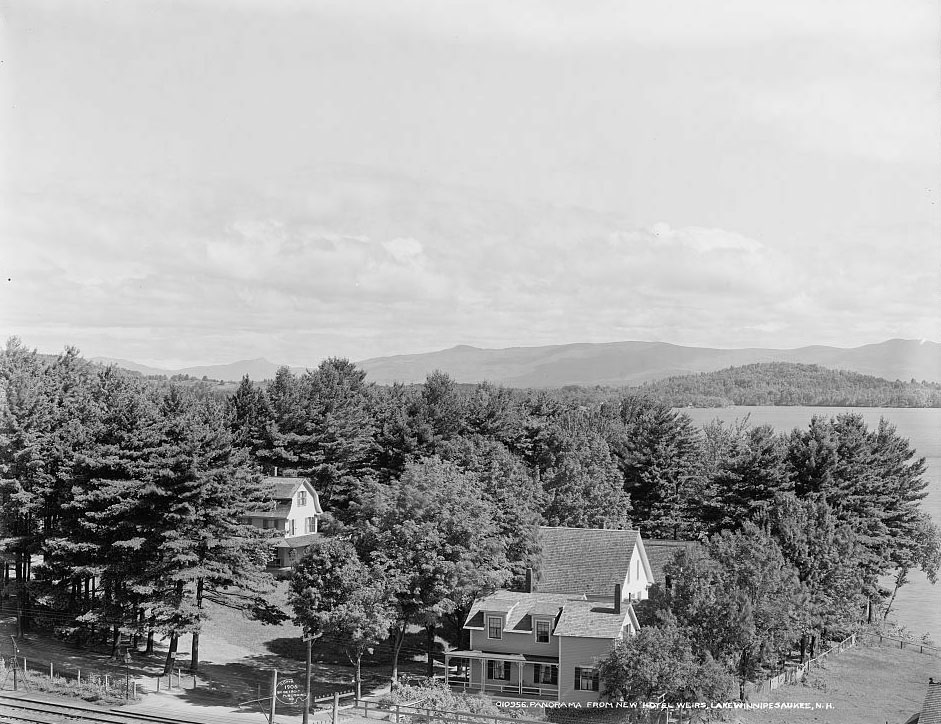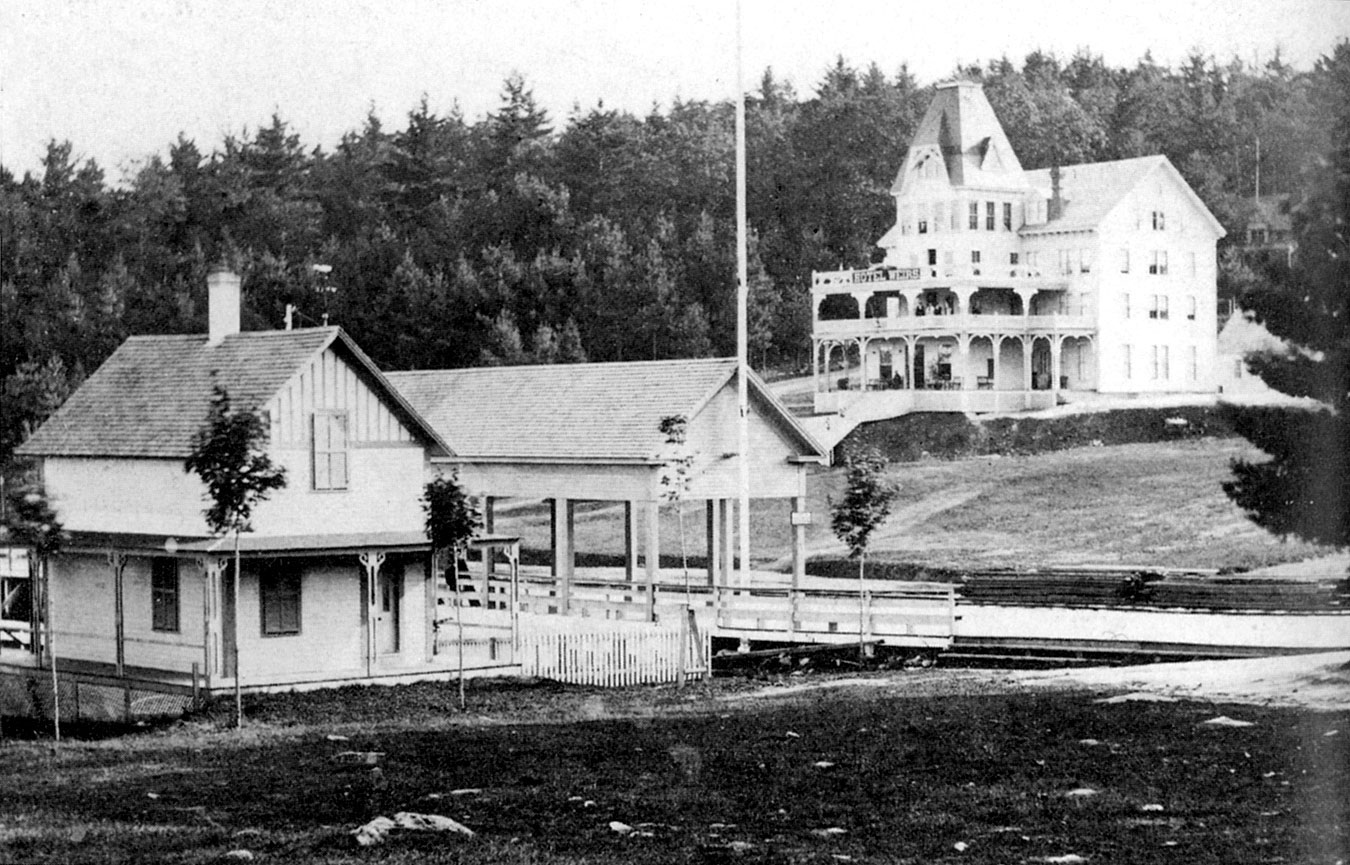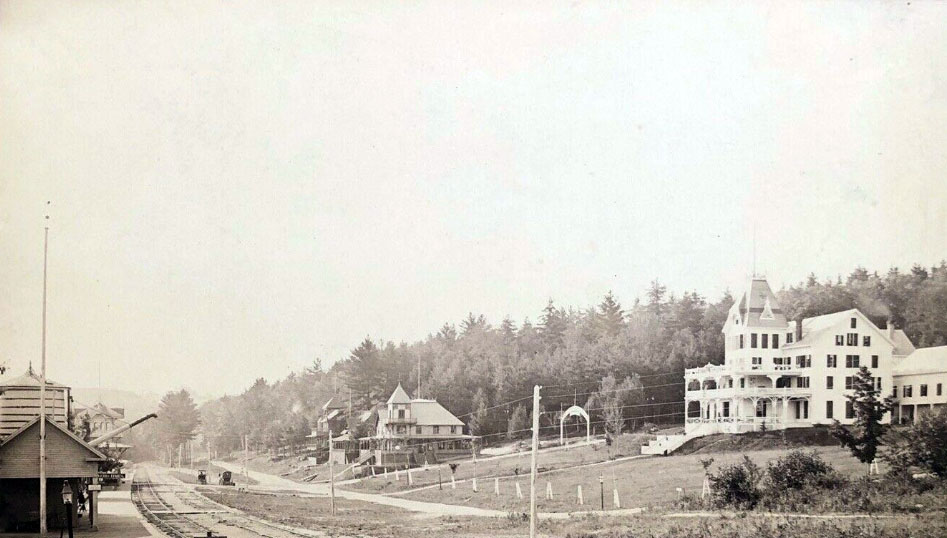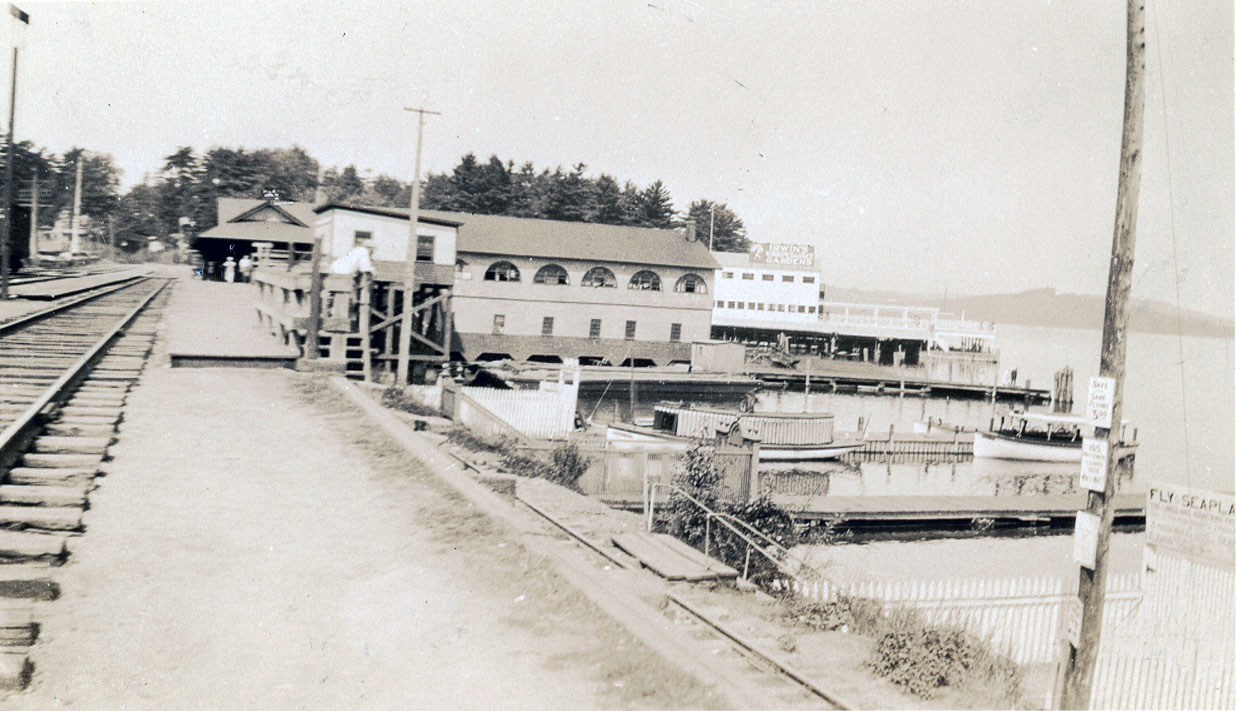Third Weirs Beach Train Station (1893-1939)
The Third Weirs Beach Train Station was built in 1893 and burned down in 1939. It was notable for its long canopy over the boardwalk, freight house, and Weirs Cafe.
Workers pose with a baggage cart on the south end of the canopy. On the roof of the station, the vertical pole with two arms folded downward was known as an “Order Board”. The station agent adjusted the board to signal various tasks for the train engineer to do upon arrival at the station. For example: Pickup train orders; Follow extra 232; Wait here for 603 to pass on the siding; etc.”
View of the Boardwalk Canopy from the New Hotel Weirs
Identical photos with different captions. The earlier photo identifies the scene as “Steamboat Landing”, while the later photo, from a New Hotel Weirs brochure, identifies the “Steamer Mt. Washington Leaving The Wharf…”
The Station Master’s House
Final Thoughts
From a 1914 Lake Winnipesaukee booklet by the B&M railroad:
The tourist has choice of three different routes to Winnipesaukee from “The Hub”. He may go via Portsmouth to Wolfeboro, getting some entrancing glimpses of the Atlantic and its surf-washed strand en route. Another route lies through a smiling section of Massachusetts and New Hampshire, via Dover, to Alton Bay, one of the prettiest and most popular of the the Winnipesaukee resorts.
The third and favorite avenue is the far-famed Merrimack Valley route, which takes the traveler in fast-moving, comfortable trains along the curving banks of the lovely Merrimac river, passing Lowell, Nashua, Manchester, Concord (the capital of the Granite State), Laconia, Lakeport, and other interesting communities, and in a few hours depositing him at Weirs, the great railroad, steamboat, and social headquarters of the Lake, in full view of Winnipesaukee’s fairest charms.
This is a ride that poets have often praised in verse, and novelists woven into their romances. It is one of the most satisfying and inspiring railroad journeys in all America…
Above, a real photo of the third station in August, 1925.










